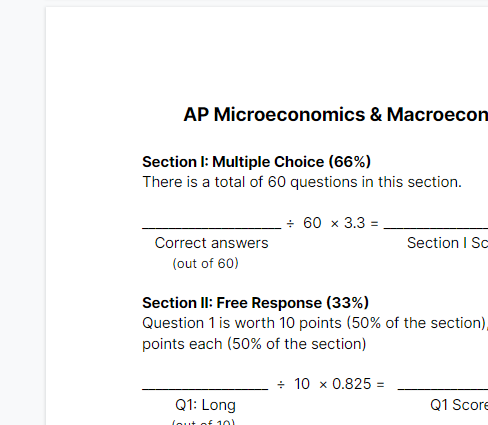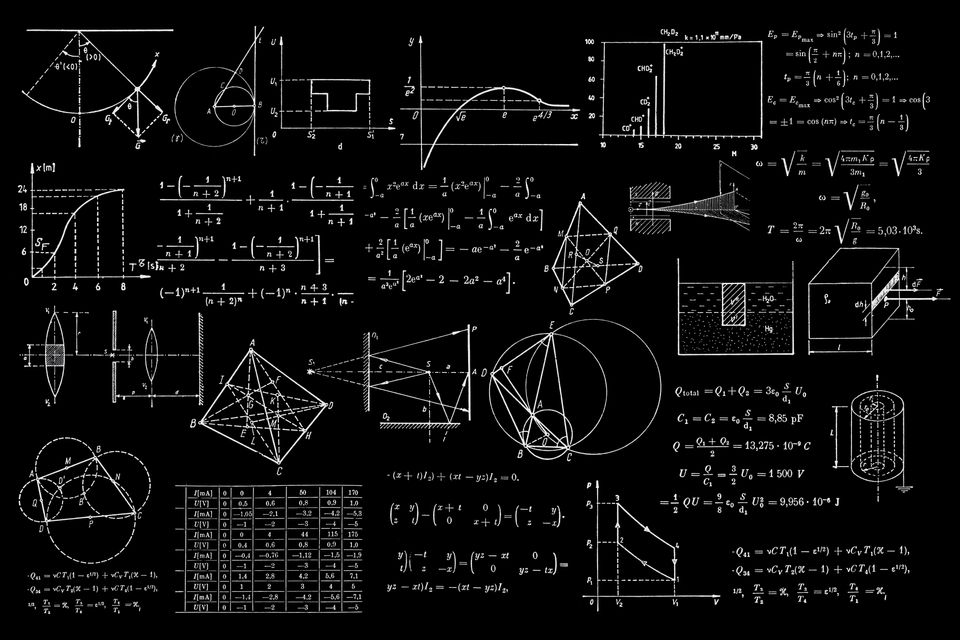1. What is AP Statistics?
We have shared information in the article Everything You Need to Know About AP Statistics Exam in detail about AP Statistics, the format of the exam, and tips to nail the exam. Therefore, in this article, we will run through the overview of the course with an approach of how you can apply the course in real life, then compare it to the AP Calculus course.
AP Statistics is equivalent to the first-semester introduction to statistics course at many universities. AP Statistics, an applied branch of mathematics, “introduces students to the major concepts and tools for collecting, analyzing, and drawing conclusions from data” (CollegeBoard). By studying different mathematical formulas, students can apply those to understand various phenomena in fields such as psychology, sociology, business, economics, law, medicine, etc. Statistics is a highly applicable and important interdisciplinary subject because students will most likely utilize statistics in their college and career journey.
The AP Stat course covers three content areas:
- Variation and Distribution: Explain the distribution of measures among individuals in a sample or a population. Using statistical methods, students illustrate understanding of variations and meaning of distributions
- Patterns and Uncertainty: From the statistical tests, students will represent and describe patterns and determine the likelihood of errors
- Data-based predictions, decisions, and conclusions: From the patterns, students can draw conclusions and make data-based decisions and predictions.
Examination:
The exam is three hours long and contains two sections as does the paper exam: multiple choice section and free response. Students are allowed to bring a graphing calculator. The AP Course and Exam cover around 9 units with specific topics students should focus on:
- Unit 1: Exploring One-Variable Data (15-23% of exam)
- Unit 2: Exploring Two-Variable Data (5-7% of exam)
- Unit 3: Collecting Data (12-15% of exam)
- Unit 4: Probability, Random Variables, and Probability Distributions (10-20% of exam)
- Unit 5: Sampling Distributions (7-12% of exam)
- Unit 6: Inference for Categorical Data: Proportions (12-15% of exam)
- Unit 7: Inference for Quantitative Data: Means (10-18% of exam)
- Unit 8: Inference for Categorical Data: Chi-Square (2-5% of exam)
- Unit 9: Inference for Quantitative Data: Slopes (2-5% of exam)
2. What is AP Calculus?
AP Calculus has two different exams and classes: AP Calculus AB and BC. The two exams are different in content; however, both Advanced Placement Calculus courses and exams are designed to be college-level calculus courses, with Pre-Calculus as a prerequisite.
Both AP Calculus AB and BC cover three content areas: Changes, Limit, and Analysis of Function. Calculus is most useful for students who plan to enter a STEM major in college. The concepts learned in Calculus classes are the foundation for solving many kinds of engineering problems like those in electrical, mechanical, and biomedical engineering.
Examination:
AP Calculus exams are long – 3 hours and 15 minutes across 2 sections: multiple choice and free response. The first section has 45 multiple-choice questions, makes up 50% of the score, and includes 2 parts: with and without using a graphing calculator. The second section has 6 free-response questions. In part A, you can use a graphing calculator to solve 2 problems in 30 minutes. In part B, you cannot use a graphing calculator to solve 4 problems in 60 minutes.
3. How to choose between AP Calculus and AP Statistics
Prerequisites
Both classes are excellent choices for college-bound students. However, AP Calculus and AP Statistics differ in prerequisites. While AP Stats requires you to finish Algebra 1 (sometimes 2), AP Cal requires you to complete Pre-Calculus beforehand. If you’re currently a senior and must choose between the two, the prerequisites you have taken will determine which one you are able to take. However, if you’re passionate and interested in taking the subject you don’t have the prerequisite for it, it’s not the end of the world! The most straightforward solution is to discuss with your academic advisor the possibility to override the prerequisite. Calculus would be very difficult to take without already understanding the concepts learned in pre-calculus. However, if you studied these topics on your own, perhaps over the summer, or through an out of school program, you would have no problem taking the class. The same goes for AP Stats, the most important concepts are learned in Algebra 1. Perhaps you took Algebra 1 then business mathematics classes after and your school has Algebra 2 as a prerequisite. If you can show your ability and understanding of main algebraic concepts, you can most likely take the Statistics class without obstacles.
Content Difficulty
Another consideration to choose between the two subjects is the content difficulty. According to College Board, the passing rates of three subjects in 2021 are shown below:
5 | 4 | 3 | |
AP Cal AB | 17.6% | 14.1% | 19.3% |
AP Cal BC | 38.3% | 16.5% | 20.4% |
AP Stat | 16.2% | 19.9% | 21.8% |
If you are looking to aim for a 5 in the upcoming AP testing season, the passing rate may be a good reference table to see the exam difficult and students’ ability to get the highest rate. While BC covers more topics than AB, students who take this class are generally very into mathematics and intend to pursue a STEM major in the future where these concepts will be used. This explains the higher 5-score rate between the two Calculus exams.
AP Stat does have a lower 5-score rate, meaning more students who take the class struggle to master the course material covered. This is likely because many students who take AP Stat have less of a mathematical background due to the lower prerequisites for the class and perhaps do not understand the advanced concepts as well. However, students’ scores and perceptions of the class can vary significantly depending on class materials, the instructors, etc. Therefore, before making a decision, students should talk to their teachers, upperclassmen, and classmates to learn more about the courses and evaluate their own strengths/weaknesses.
That being said, if you find yourself struggling with advanced mathematics concepts, AP Statistics, as well as AP Cal AB and BC, will be a challenge for you. However, if you enjoy the challenging concepts and enjoy applying mathematics concepts to real life, you can comfortably choose the subjects you prefer depending on the prerequisites and class schedule.
Credit Transfer
Credit transfer can also be a good consideration when you decide on which tests to take. Credit transfer is when you waive certain introductory classes by using your AP scores from high school. If you score a 4 and above, you are most likely to be able to apply the credits to your college. Some colleges will accept a 3 or above. Keep in mind you don’t have to choose one subject over the other. If your schedule allows you to be flexible and take more classes, we encourage you to take both AP Cal and AP Stat and then take the tests. If you score high on both examinations, you will be able to transfer credits to college. Your major in college may determine whether you need to take all three AP tests. If you are pursuing a non-STEM major, you are recommended to take the AP Cal AB class. This is because your college curriculum will likely require one Calculus class that you can then waive by using the AP credit. However, if you are pursuing a STEM major, chances are you will have to take both AP Calculus BC as well as AP Stats because these subjects will both be required courses in the college curriculum.
Introducing Aralia Test Preparation Bootcamp, where students can excel in standardized tests with our comprehensive approach. At Aralia, we prioritize maximizing study efficiency and accelerating score improvement through a combination of practice examinations, expert strategies, and personalized guidance. Our Bootcamp offers students the opportunity to achieve significant score improvements within a condensed timeframe by learning strategic approaches tailored to their individual needs. With instructors who are AP readers, students benefit from expert teaching and gain valuable insights into exam techniques. Furthermore, our program equips students with versatile skills and strategies that can be applied to a range of standardized tests, ensuring they are well-prepared to adapt to various exam types.

AP Statistics
AP Statistics introduces students to fundamental concepts and tools for collecting, analyzing, and drawing informed conclusions from data. The course revolves around four key themes: exploring data, sampling and experimentation, probability and simulation, and statistical inference.

AP Calculus AB
Improve your AP score with this AP Calculus AB course. The course will review the essential topics tested in the exam and cover both multiple-choice questions and free-response questions. Please note that AP Calculus BC-specific topics like Parametric Equations, Polar Coordinates, Vector-Valued Functions, and Infinite Sequences and Series will not be covered in this course.

AP Calculus BC
This comprehensive course is designed to cover only AP Calculus BC topics. We will provide guidance on approaching multiple-choice and free-response questions, helping you develop the skills needed for success. By participating in this course, you’ll gain the knowledge and strategies necessary to excel in the AP Calculus BC exam.
Further reading:

FREE 2024 AP Scoring Worksheet
With the scoring worksheet, you will be able to calculate your target score in preparation for the upcoming exam in May. We also have a full scoring worksheet available below if you want to print it out and keep it in your folder.










